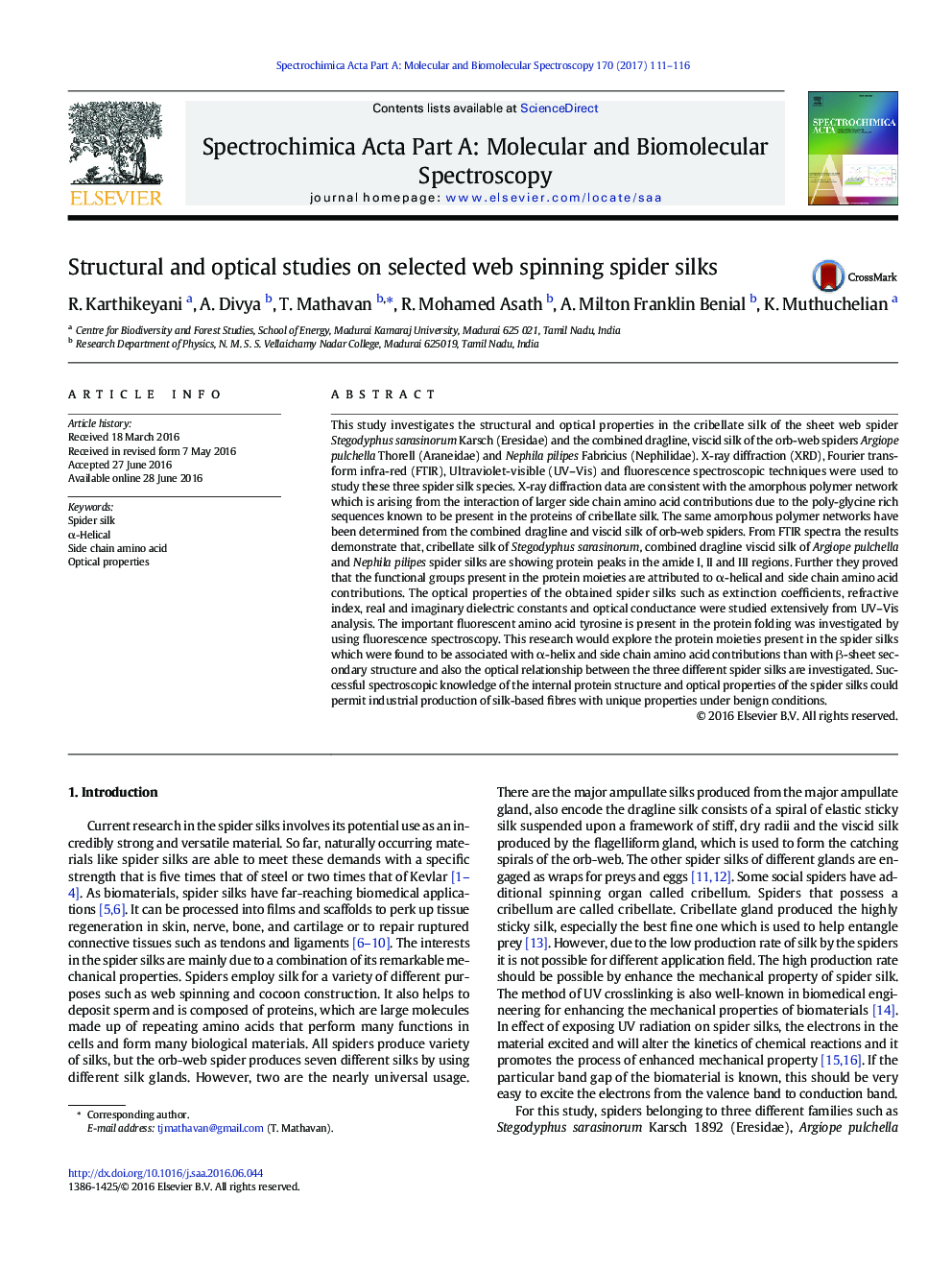| کد مقاله | کد نشریه | سال انتشار | مقاله انگلیسی | نسخه تمام متن |
|---|---|---|---|---|
| 1230800 | 1495199 | 2017 | 6 صفحه PDF | دانلود رایگان |
• Structural and optical properties of spider silks have been investigated by XRD, FTIR, UV- Vis and fluorescence studies.
• XRD analysis confirms the amorphous nature of polymer network caused by larger side chain amino acid contributions.
• FTIR spectra demonstrated that the selected three spider silks show protein peaks in the amide I, II, III regions.
• The optical properties of three different spider silks such as K, n, Ɛr, Ɛi and σ were studied extensively from UV- Vis analysis.
• Fluorescent amino acid tyrosine, in the protein folding was investigated by fluorescence spectroscopy.
This study investigates the structural and optical properties in the cribellate silk of the sheet web spider Stegodyphus sarasinorum Karsch (Eresidae) and the combined dragline, viscid silk of the orb-web spiders Argiope pulchella Thorell (Araneidae) and Nephila pilipes Fabricius (Nephilidae). X-ray diffraction (XRD), Fourier transform infra-red (FTIR), Ultraviolet-visible (UV–Vis) and fluorescence spectroscopic techniques were used to study these three spider silk species. X-ray diffraction data are consistent with the amorphous polymer network which is arising from the interaction of larger side chain amino acid contributions due to the poly-glycine rich sequences known to be present in the proteins of cribellate silk. The same amorphous polymer networks have been determined from the combined dragline and viscid silk of orb-web spiders. From FTIR spectra the results demonstrate that, cribellate silk of Stegodyphus sarasinorum, combined dragline viscid silk of Argiope pulchella and Nephila pilipes spider silks are showing protein peaks in the amide I, II and III regions. Further they proved that the functional groups present in the protein moieties are attributed to α-helical and side chain amino acid contributions. The optical properties of the obtained spider silks such as extinction coefficients, refractive index, real and imaginary dielectric constants and optical conductance were studied extensively from UV–Vis analysis. The important fluorescent amino acid tyrosine is present in the protein folding was investigated by using fluorescence spectroscopy. This research would explore the protein moieties present in the spider silks which were found to be associated with α-helix and side chain amino acid contributions than with β-sheet secondary structure and also the optical relationship between the three different spider silks are investigated. Successful spectroscopic knowledge of the internal protein structure and optical properties of the spider silks could permit industrial production of silk-based fibres with unique properties under benign conditions.
Figure optionsDownload as PowerPoint slide
Journal: Spectrochimica Acta Part A: Molecular and Biomolecular Spectroscopy - Volume 170, 5 January 2017, Pages 111–116
